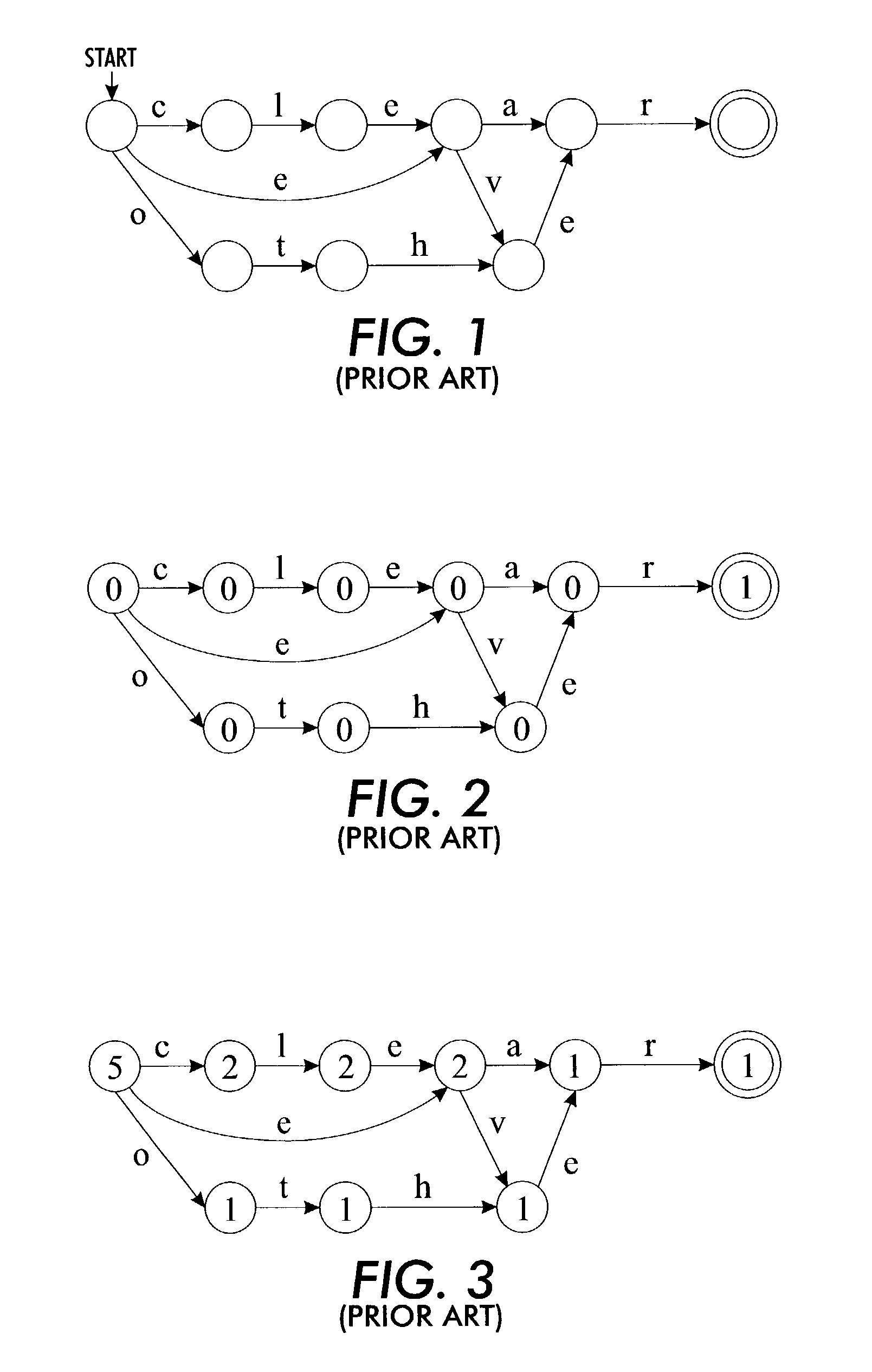Information retrieval and encoding via substring-number mapping
a substring number and information retrieval technology, applied in the field of formal language theory, can solve the problems of inability to work with traditional techniques to encode infinite languages or transducers
- Summary
- Abstract
- Description
- Claims
- Application Information
AI Technical Summary
Benefits of technology
Problems solved by technology
Method used
Image
Examples
Embodiment Construction
A. Definitions and Conventions
[0051]For the ease of explanation, the invention will be described mainly in respect to natural-language examples, referring most often to words rather than strings, to morphemes rather than substrings and to morpheme-to-number mapping rather than substring-to-number mapping. However, the technique is not limited to natural language and could be used, for example, in indexing gene substrings in DNA or motif substrings in a digitized musical score.
[0052]The operation of number-to-morpheme mapping is the straightforward inverse of morpheme-to-number mapping.
A.1 String and Word
[0053]In formal language theory, the terms “string” and “word” are used interchangeably. They do not necessarily have anything to do with natural language “words”. Strings (i.e., words) are concatenations of “symbols” from an “alphabet”. In natural languages, the symbols are usually alphabetic letters, e.g. “dog”, “cat” and “elephant”; but strings, words and symbols do not necessaril...
PUM
 Login to View More
Login to View More Abstract
Description
Claims
Application Information
 Login to View More
Login to View More - R&D
- Intellectual Property
- Life Sciences
- Materials
- Tech Scout
- Unparalleled Data Quality
- Higher Quality Content
- 60% Fewer Hallucinations
Browse by: Latest US Patents, China's latest patents, Technical Efficacy Thesaurus, Application Domain, Technology Topic, Popular Technical Reports.
© 2025 PatSnap. All rights reserved.Legal|Privacy policy|Modern Slavery Act Transparency Statement|Sitemap|About US| Contact US: help@patsnap.com



